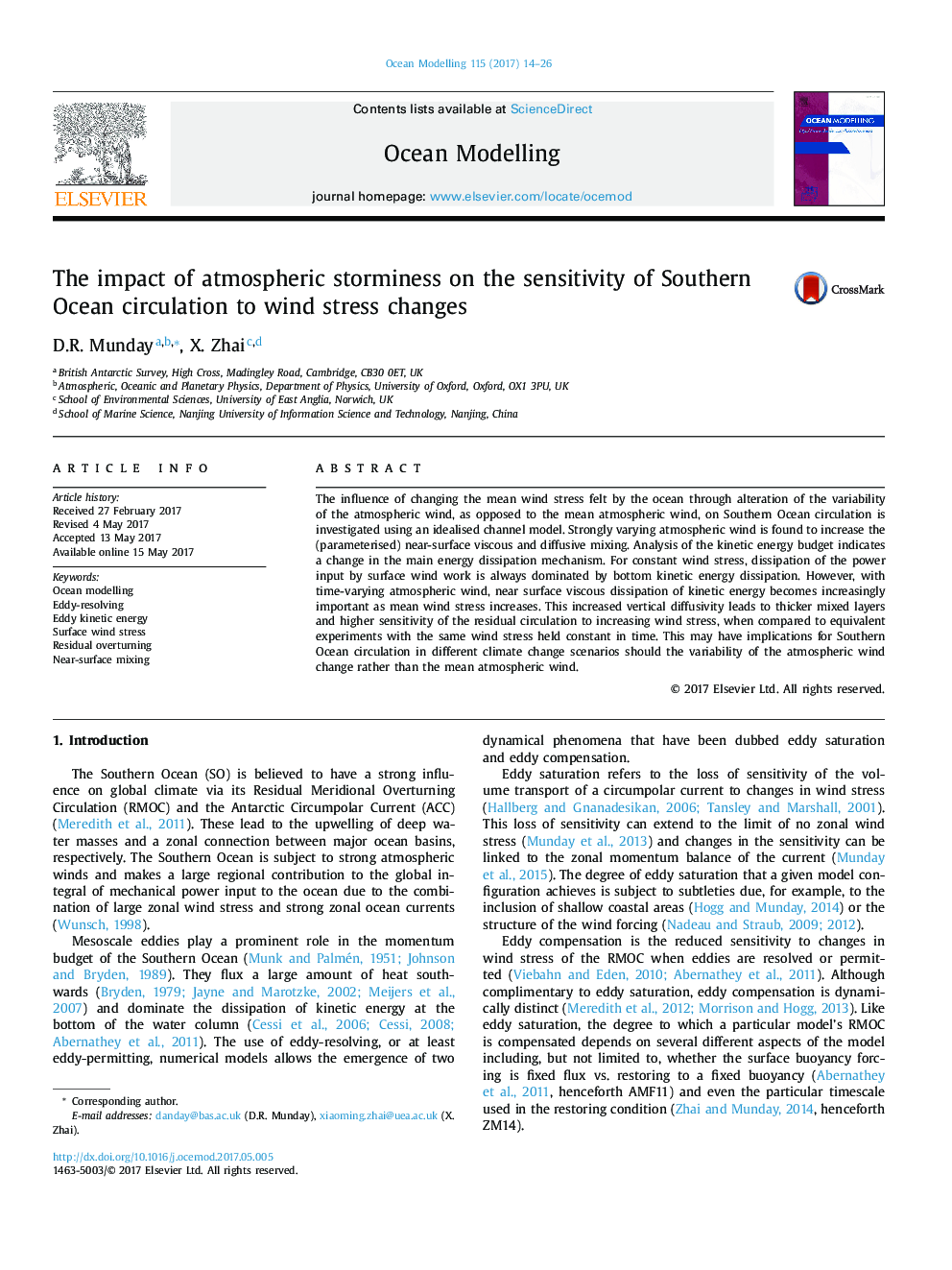| Article ID | Journal | Published Year | Pages | File Type |
|---|---|---|---|---|
| 5766356 | Ocean Modelling | 2017 | 13 Pages |
â¢Increased wind stress can be caused by increased mean atmospheric wind or increased variability of the atmospheric wind.â¢The impact of atmospheric wind variability is tested in an idealised Southern Ocean channel model.â¢Overturning circulation is more sensitive to wind stress changes when the stress is altered due to changes in variability.â¢Increase in sensitivity tied to changes in near-surface dissipation and the dissipation mechanism for kinetic energy.
The influence of changing the mean wind stress felt by the ocean through alteration of the variability of the atmospheric wind, as opposed to the mean atmospheric wind, on Southern Ocean circulation is investigated using an idealised channel model. Strongly varying atmospheric wind is found to increase the (parameterised) near-surface viscous and diffusive mixing. Analysis of the kinetic energy budget indicates a change in the main energy dissipation mechanism. For constant wind stress, dissipation of the power input by surface wind work is always dominated by bottom kinetic energy dissipation. However, with time-varying atmospheric wind, near surface viscous dissipation of kinetic energy becomes increasingly important as mean wind stress increases. This increased vertical diffusivity leads to thicker mixed layers and higher sensitivity of the residual circulation to increasing wind stress, when compared to equivalent experiments with the same wind stress held constant in time. This may have implications for Southern Ocean circulation in different climate change scenarios should the variability of the atmospheric wind change rather than the mean atmospheric wind.
